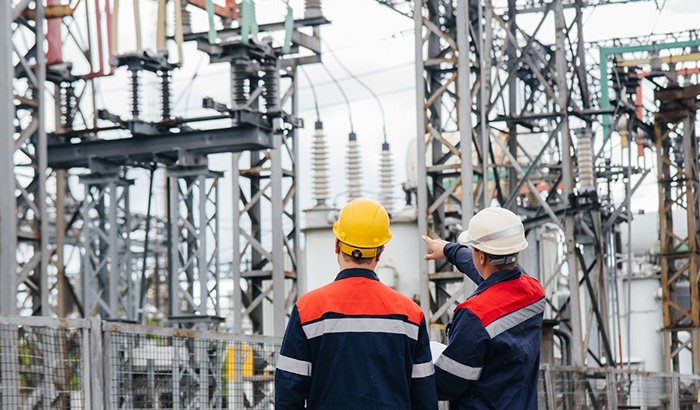In today’s rapidly evolving energy landscape, electrical substations serve as critical nodes that ensure the reliable delivery of power to homes, industries, and communities. Central to the performance of any substation is the transformer, a complex piece of equipment that steps voltage levels up or down to facilitate efficient transmission and distribution. Proper installation of transformers is not merely a procedural necessity—it is a strategic investment in preventing unscheduled outages, minimizing maintenance costs, and safeguarding the integrity of the power grid. Manikaran Enterprises understands the high stakes involved and emphasizes meticulous practices that uphold the highest industry standards.
The Connection Between Installation Quality and Downtime
Downtime in electrical substations can stem from a variety of sources—equipment failure, human error, environmental factors, and poor installation practices. When a transformer is installed incorrectly, even minor misalignments or improper connections can lead to gradual degradation of insulating materials, overheating, and ultimately catastrophic failures. Each hour of downtime translates into lost productivity for businesses, potential safety hazards, and reputational damage for utilities. By prioritizing precision during the transformer installation phase, stakeholders can significantly reduce the frequency and duration of these interruptions.
Precision in Foundation and Alignment
A foundational step in transformer installation involves preparing a stable, level base capable of supporting the transformer’s immense weight and managing mechanical stresses. Any deviation in alignment can introduce mechanical vibration, accelerate wear on bushings, and compromise the effectiveness of cooling systems. Through careful surveying, concrete curing, and the use of laser-alignment tools, installation teams ensure that the transformer sits perfectly square and level. This attention to detail lays the groundwork for long-term reliability and prevents alignment-related issues that often result in prolonged repair times.
Ensuring Electrical and Mechanical Integrity
Beyond the physical foundation, proper transformer installation demands rigorous attention to both electrical and mechanical connections. Tightness torques on high-voltage bushings, grounding arrangements, and cable terminations must adhere strictly to manufacturer specifications. Loose or over-torqued connections can give rise to hot spots, partial discharges, and insulation breakdown. During commissioning, comprehensive infrared thermography and electrical tests (such as turns-ratio and winding-resistance measurements) are conducted to validate connection integrity. Addressing potential weak points before energization dramatically lowers the likelihood of post-commissioning failures.
Environmental Considerations and Site Preparation
Environmental factors—such as humidity, temperature fluctuations, and airborne contaminants—can indirectly influence transformer longevity. Proper installation protocols include establishing adequate clearances, installing weatherproof barriers, and incorporating moisture-control measures like desiccant breathers. Site preparation also involves ensuring that drainage and spill containment systems are in place to protect against oil leaks, which could otherwise lead to extended downtime for environmental remediation. These preventive measures, often overlooked when deadlines loom, contribute significantly to uninterrupted substation operation.
Specialized Services for Seamless Commissioning
Partnering with a trusted expert can make all the difference when it comes to seamless transformer installation. As a Top Electrical Solution Company in Rajasthan, Manikaran Enterprises brings extensive local experience and a commitment to excellence. From initial site surveys and logistics planning to the final commissioning tests, the company’s multidisciplinary teams adhere to stringent quality control processes. Their seamless coordination minimizes installation timelines and ensures that every substation project meets or exceeds reliability benchmarks.
Leveraging Comprehensive Installation and Commissioning Expertise
When selecting service providers, it is crucial to choose a firm that offers end-to-end capabilities, including design review, equipment handling, installation, and post-commissioning support. Manikaran Enterprises partners with leading suppliers to offer specialized Transformer Installation and Commissioning Services in India. This holistic approach ensures that transformers are correctly integrated into the network, tested under real-world conditions, and fine-tuned to optimize performance. Such comprehensive expertise translates into faster turnaround times and fewer unplanned outages.
Training and Knowledge Transfer
Even the best installation practices can falter if on-site personnel lack the necessary training to manage and operate the equipment. As part of its service commitment, Manikaran Enterprises provides in-depth training sessions for client teams, covering routine inspection protocols, emergency response procedures, and optimal maintenance strategies. Empowering local operators with this knowledge creates a proactive culture of reliability, where minor issues are identified and resolved before they escalate into major downtime events.
Conclusion
Minimizing downtime in electrical substations hinges on the foundation laid during transformer installation. From precise alignment and secure connections to environmental safeguards and specialized commissioning services, every aspect of the installation process contributes to long-term reliability. By engaging experienced partners such as Manikaran Enterprises, utilities and project owners can rest assured that their transformers will perform optimally, safeguarding continuous power delivery and avoiding the costly consequences of unexpected outages. Investing in proper transformer installation is, therefore, not just a technical requirement—it is a strategic imperative for sustaining the vitality of modern power systems.





